Abstract
The new H2-receptor antagonist, ranitidine, has been compared with cimetidine and metiamide as an inhibitor of gastric acid secretion in the dog. All three compounds were effective both intravenously or by mouth in inhibiting secretion induced by histamine, pentagastrin, or bethanechol. This inhibition was mainly attributable to a reduction in the volume of secretion, although there was also a significant reduction in the concentration of acid secreted. Metiamide was slightly less active than cimetidine, but ranitidine was four to nine times more potent than cimetidine, depending on the secretagogue used. The antisecretory activity of ranitidine does not result from a limitation in blood flow to the gastric mucosa.
Full text
PDF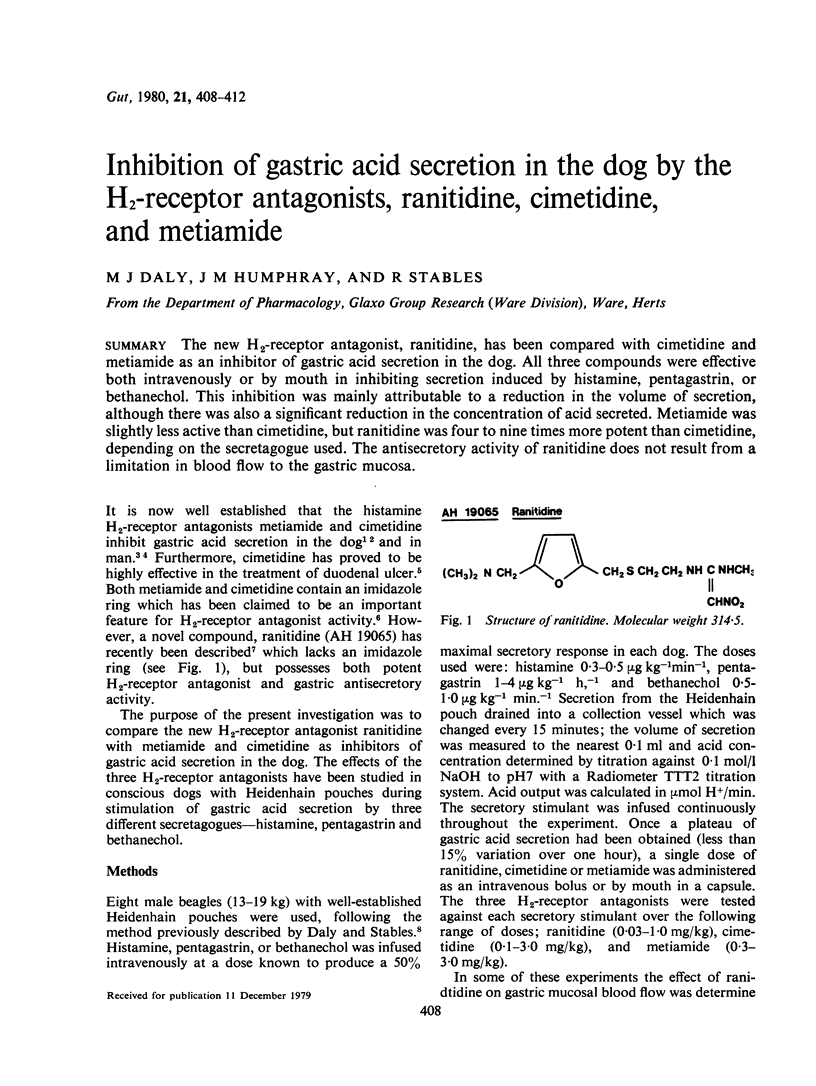
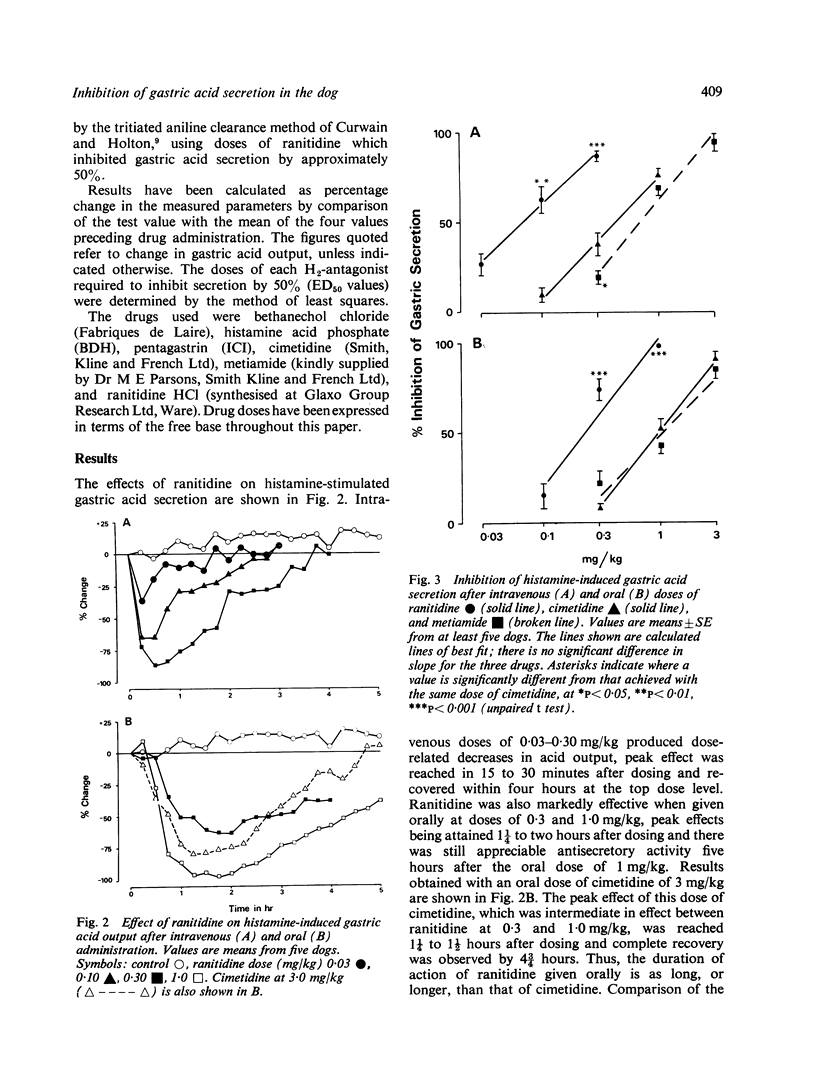
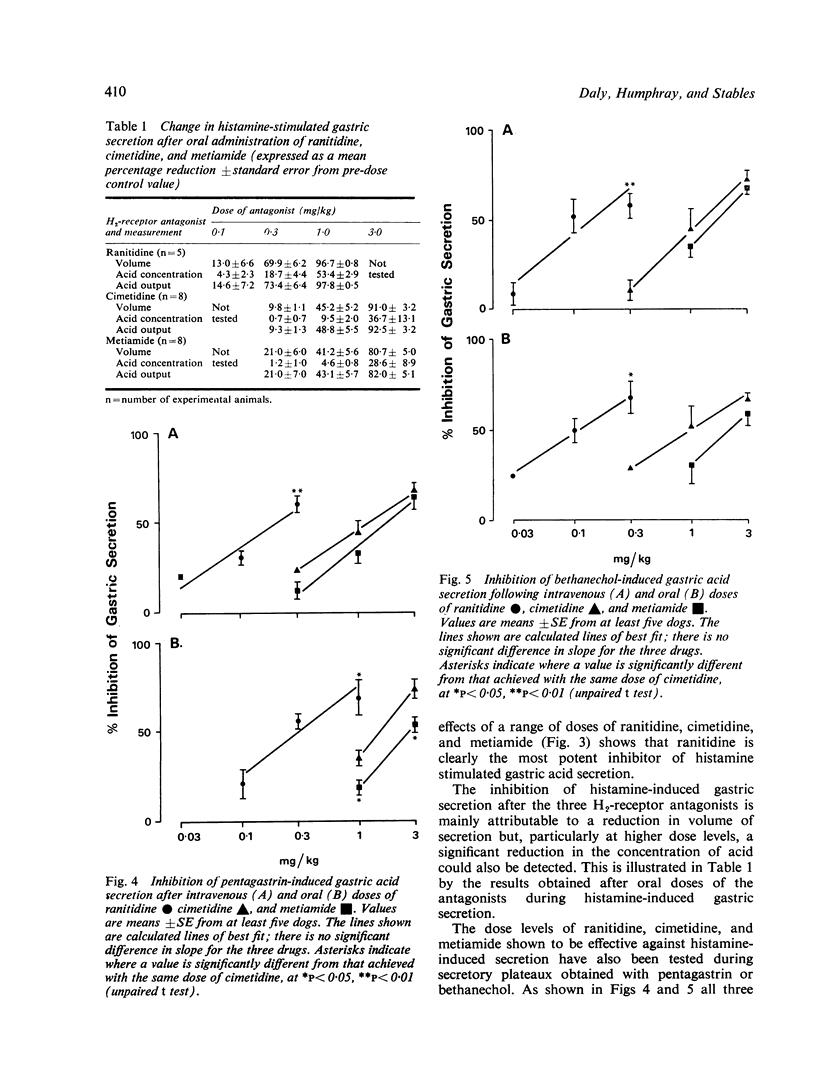
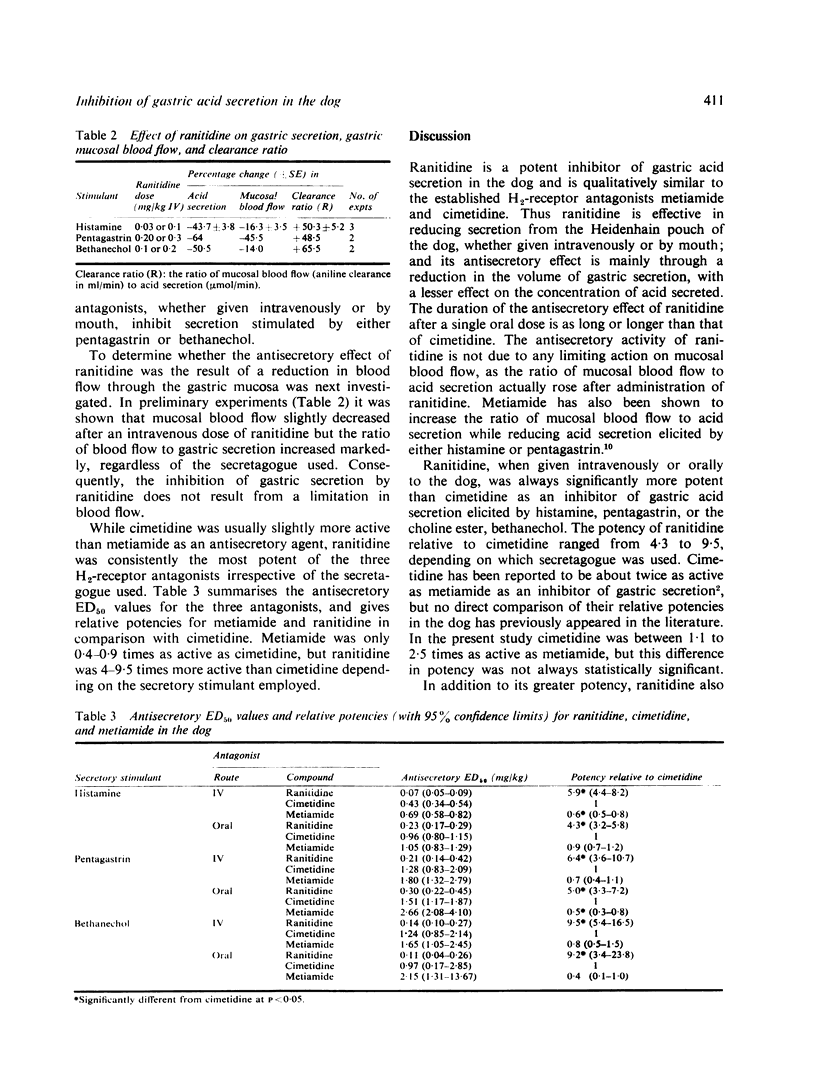
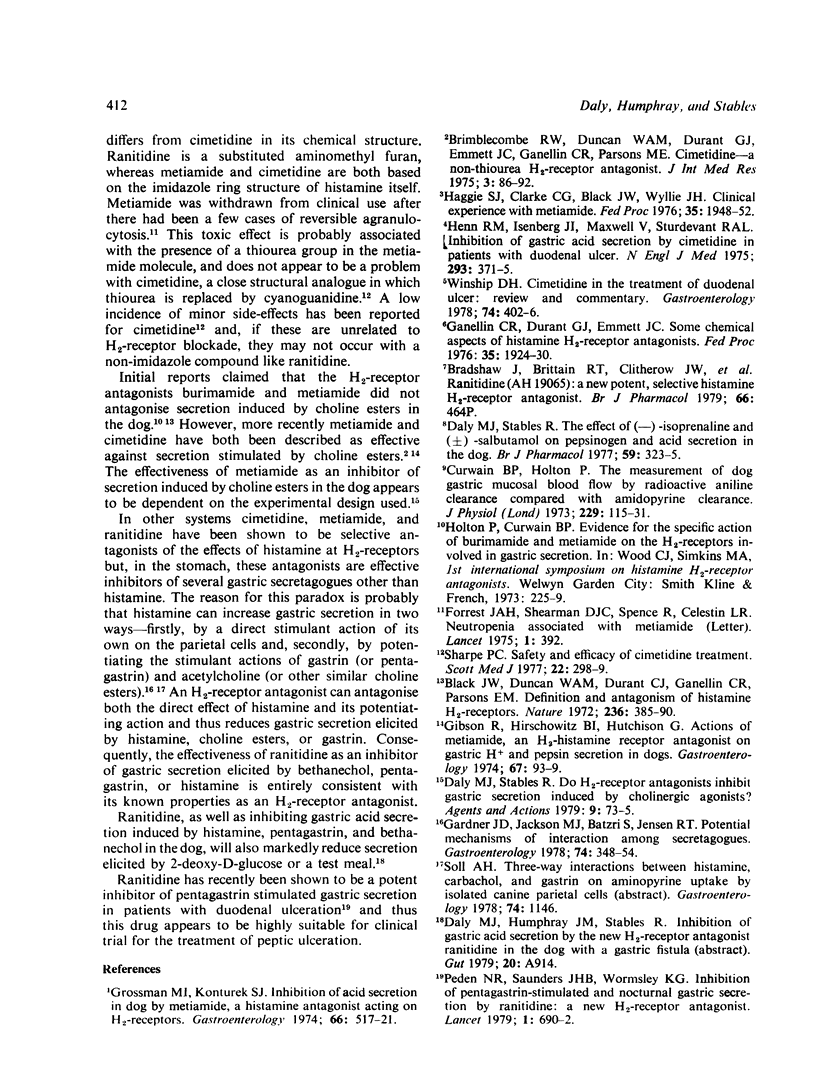
Selected References
These references are in PubMed. This may not be the complete list of references from this article.
- Black J. W., Duncan W. A., Durant C. J., Ganellin C. R., Parsons E. M. Definition and antagonism of histamine H 2 -receptors. Nature. 1972 Apr 21;236(5347):385–390. doi: 10.1038/236385a0. [DOI] [PubMed] [Google Scholar]
- Curwain B. P., Holton P. The measurement of dog gastric mucosal blood flow by radioactive aniline clearance compared with amidopyrine clearance. J Physiol. 1973 Feb;229(1):115–131. doi: 10.1113/jphysiol.1973.sp010130. [DOI] [PMC free article] [PubMed] [Google Scholar]
- Daly M. J., Stables R. Do H2-receptor antagonists inhibit gastric secretion induced by cholinergic agonists? [proceedings]. Agents Actions. 1979 Apr;9(1):73–75. doi: 10.1007/BF02024122. [DOI] [PubMed] [Google Scholar]
- Daly M. J., Stables R. The effect of (-)-isoprenaline and (+/-)-salbutamol on pepsinogen and acid secretion in the dog. Br J Pharmacol. 1977 Feb;59(2):323–325. doi: 10.1111/j.1476-5381.1977.tb07495.x. [DOI] [PMC free article] [PubMed] [Google Scholar]
- Forrest J. A., Shearman D. J., Spence R., Celestin L. R. Letter: Neutropenia associated with metiamide. Lancet. 1975 Feb 15;1(7903):392–393. doi: 10.1016/s0140-6736(75)91305-7. [DOI] [PubMed] [Google Scholar]
- Ganellin C. R., Durant G. J., Emmett J. C. Some chemical aspects of histamine H2-receptor antagonists. Fed Proc. 1976 Jun;35(8):1924–1930. [PubMed] [Google Scholar]
- Gardner J. D., Jackson M. J., Batzri S., Jensen R. T. Potential mechanisms of interaction among secretagogues. Gastroenterology. 1978 Feb;74(2 Pt 2):348–354. [PubMed] [Google Scholar]
- Gibson R., Hirschowitz B. I., Hutchison G. Actions of metiamide, an H2-histamine receptor antagonist, on gastric H+ and pepsin secretion in dogs. Gastroenterology. 1974 Jul;67(1):93–99. [PubMed] [Google Scholar]
- Grossman M. I., Konturek S. J. Inhibition of acid secretion in dog by metiamide, a histamine antagonist acting on H2 receptors. Gastroenterology. 1974 Apr;66(4):517–521. [PubMed] [Google Scholar]
- Haggie S. J., Clark C. G., Black J. W., Wyllie J. H. Clinical experience with metiamide. Fed Proc. 1976 Jun;35(8):1948–1952. [PubMed] [Google Scholar]
- Henn R. M., Isenberg J. I., Maxwell V., Sturdevant R. A. Inhibition of gastric acid secretion by cimetidine in patients with duodenal ulcer. N Engl J Med. 1975 Aug 21;293(8):371–375. doi: 10.1056/NEJM197508212930802. [DOI] [PubMed] [Google Scholar]
- Peden N. R., Saunders J. H., Wormsley K. G. Inhibition of pentagastrin-stimulated and nocturnal gastric secretion by ranitidine. A new H2-receptor antagonist. Lancet. 1979 Mar 31;1(8118):690–692. doi: 10.1016/s0140-6736(79)91146-2. [DOI] [PubMed] [Google Scholar]
- Sharpe P. C. Safety and efficacy of cimetidine treatment. Scott Med J. 1977 Oct;22(4):298–299. doi: 10.1177/003693307702200418. [DOI] [PubMed] [Google Scholar]
- Winship D. H. Cimetidine in the treatment of duodenal ulcer: review and commentary. Gastroenterology. 1978 Feb;74(2 Pt 2):402–406. [PubMed] [Google Scholar]


